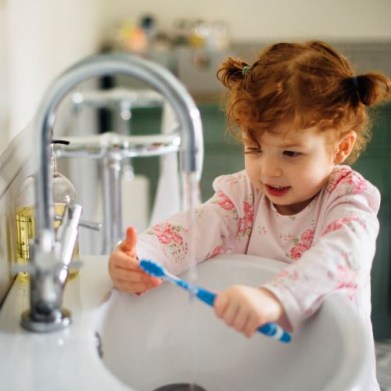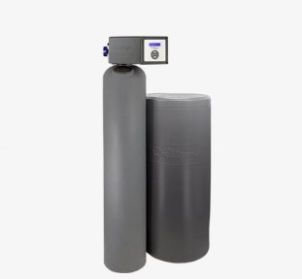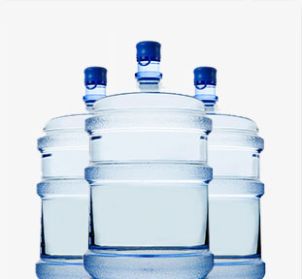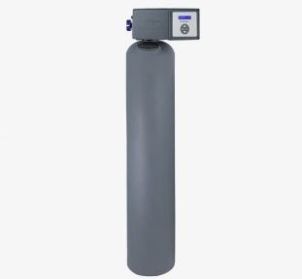
How to Remove Fluoride From Water

Fluoride is intentionally added to the public water supply in many areas, including the U.S. and Canada. Fluoridated water is intended to help promote dental health by stopping or reversing cavity development.
But can you have too much of a good thing? You may have wondered if there are cases in which you need to remove fluoride from your tap water and, if so, how to do it.
In the case that fluoride removal is your goal, the best method is to use a reverse osmosis (RO) water filter. Here, we’ll explore information to help you answer your questions about fluoridated water, dental health and water filtration.
If you’re interested in knowing what is in tap water, click here
How to Reduce Fluoride in Drinking Water
Most people get enough fluoride without nearing the Upper Intake Level of 10 milligrams (mg) daily, which is the amount considered safe by health organizations. For example, in the U.S., most adults get about three milligrams (mg) of fluoride daily.
According to the U.S. Centers for Disease Control and Prevention (CDC), drinking water should contain 0.7 mg/L (milligrams per liter) of fluoride to reliably provide fluoride’s oral health benefits. The U.S. Environmental Protection Agency (EPA) recommends that drinking water contain no more than 2.0 mg/L of fluoride; the Guidelines for Canadian Drinking Water Quality have set a maximum acceptable concentration of 1.5 mg/L. This is mainly to prevent an often-cosmetic issue called dental fluorosis (more on that later).
This means that, in certain cases, you may decide you need something that removes fluoride from your drinking water. The first thing to do is find out what you’re dealing with. That’s because different regions may have varying levels of fluoride in water.
To find out the fluoride concentration in your water, start with a professional water test and consultation. Your local Culligan® expert will be able to provide information on your local tap water profile, including fluoride levels in your area, while they perform the test. Typically within 30 minutes, you’ll have valuable information about your home’s water quality and how to improve it.
In the meantime, however, it’s important to know what will and won’t work when it comes to fluoride water. Let’s take a closer look at a few common ideas:
Reverse Osmosis Filtration
One of the best, most effective ways to reduce fluoride in drinking water is to choose a reverse osmosis water filter. These systems are generally installed under your kitchen sink, where they can reduce up to a broad range of potential contaminants in your water.* Although many people choose an RO system because they want a water filter that can handle concerns like lead, mercury, particles and other water worries, RO is also a great choice for reducing fluoride levels.
That’s a big deal, because other common water filter solutions — including refrigerator filter, filtered pitcher and some other carbon filters — aren’t usually equipped to handle more-complex issues than taste and smell. Additionally, reverse osmosis uses a variety of filtration stages and solutions, such as pressure and a specialized membrane, to cover multiple bases. That means you can rely on this water filter to help address all kinds of issues.
Bleaching
Studies have shown that bleaching powder may be an effective method of fluoride removal. However, it’s probably not something you’d want to do for your tap water. After all, despite its efficiency in creating potable water during an emergency, bleach may come with issues that make it a bad fit for daily use — for example, unpleasant odors and tastes.
Boiling
Boiling is another common solution for water problems and is sometimes even required by boil water advisories. However, this approach won’t remove fluoride and might even increase its concentration.
Sitting
Some issues can be reduced or managed by letting tap water sit out for a while — usually hours or days. Unfortunately, this isn’t effective when it comes to fluoride, because the mineral won’t evaporate out of your water.
Should You Remove Fluoride From Drinking Water?
Remember why fluoride is added to your tap water in the first place. The idea is to provide a method of improving your dental health without taking extra steps.
It’s important to understand that fluoride benefits are generally topical, not systemic. So do you really need to drink your fluoride for it to work? The truth is that, while toothpaste or mouthwash could offer some of the same benefits, these alternative sources may not have the same amount of fluoride, frequency of exposure or effectiveness.
Additionally, there’s often no need to remove fluoride from drinking water, because most people don’t get close to the Upper Intake Level.
Fluoride Concerns
Despite studies and evidence pointing to the benefits of fluoridated drinking water, this approach isn’t without its skeptics and potential detractors. For example, the cost of water fluoridation has been estimated at $0.60 to $1 per person per year — a noteworthy price for something that, many critics point out, isn’t strictly necessary due to abundant alternative fluoride sources.
There are also a variety of other considerations. Since the public can’t control how much of this mineral is added to their municipal drinking water, some people might end up with a higher fluoride intake than intended — such as individuals who drink lots of water or infants drinking formula made from tap water. Furthermore, some organizations have flagged health concerns associated with excessive consumption of or exposure to fluoride, including:
- Dental fluorosis: This condition, generally caused by excessive fluoride consumption during tooth development, is a cosmetic discoloration of tooth enamel.
- Skeletal fluorosis: In this disease, bones may become hardened and less elastic, leading to an increased risk of fractures and impaired joint mobility. The EPA cites this as one of the reasons for setting its primary standard for fluoride in drinking water, but skeletal fluorosis is not likely a concern for most people.
- Overdoses: Although rare, accidents can cause an excessively high fluoride level in tap water. This can result in nausea, vomiting, inflammation and occasionally even death.
What is Fluoride?
Although it’s likely most familiar as a component of your toothpaste, fluoride is also abundant in nature. Like many other minerals, it’s released by rocks, which means it can be found just about everywhere. In fact, plenty of everyday things — like soil, plants, food and almost all water — contain small amounts of fluoride.
However, this concentration generally isn’t high enough to fulfill fluoride’s best-known role: preventing tooth decay.
The story of fluoride began in 1901 when Dr. Frederick McKay noticed brown stains on his dental patients’ teeth. He studied the issue in Colorado Springs, Colorado, and Oakley, Idaho, among other areas. Ultimately, his work supported research that, 40 years later, would uncover something critical: People in areas with a high fluoride concentration were less likely to have certain dental issues. As it turns out, researchers had discovered that fluoride may help prevent and even reverse the formation of cavities, stimulate bone formation and support good dental health. It has been found to reduce tooth decay by 20% to 40%, and kids who drink fluoridated water have an average of two fewer decayed teeth than those who don’t.
That’s great news — but we know that in the United States and Canada, naturally occurring fluoride isn’t typically found in high-enough levels to get the job done. So how can you get enough of this mineral to prevent tooth decay?
That’s where water fluoridation comes in.
A Brief History of Fluoridated Water
In 1945, Grand Rapids, Michigan, became the first to add fluoride to its tap water supply. The city increased the fluoride concentration to 1 part per million (ppm), or about 1 milligram per liter (mg/L). That same year, Brantford, Ontario, began doing the same thing.
As tooth decay in those areas diminished and dental health flourished, other municipalities took up the practice. Soon, fluoridated water was available across North America.
By 2008, 72% of U.S. residents served by public water systems had municipal access to fluoridated drinking water; in 2009, 45% of Canadians had fluoridated water. This has since been called one of public health’s greatest success stories by the CDC and the World Health Organization (WHO), has designated fluoride access as a basic human right.
Other significant supporters of fluoridation have included:
- Health Canada
- Canadian Association of Public Health Dentistry
- Canadian Pediatric Society
- EPA
- American Dental Association (ADA)
Other Ways to Get Your Fluoride
Let’s say you’ve chosen the perfect reverse osmosis water filter. Now that you can effectively reduce fluoride in your drinking water, how can you get all those dental benefits?
Here are just a few alternative ways to get your fluoride:
Toothpastes
Most toothpastes contain fluoride. In fact, all toothpastes with the ADA seal of acceptance must include fluoride, which means brushing your teeth regularly is a good way to make sure you’re getting the benefits of this mineral. Just check your toothpaste brand to make sure it has this seal — and, for extra information, look at the ingredients list on the back of the box or tube. To get even more fluoride benefits, don’t rinse after you brush so that the mineral will stay on your teeth longer.
Keep in mind that ingesting fluoride in large amounts can lead to certain health issues. As such, it’s important to monitor children during toothbrushing, especially if you use toothpastes with fun flavors (as children may be more likely to swallow these).
Mouthwashes
When it comes to mouthwash, you might have to do a little more digging to find a brand that has the fluoride profile you’re looking for. That’s because many mouthwashes contain other ingredients for dental health, and mouthwashes that do contain fluoride may use it in smaller amounts than are found in toothpaste. On the other hand, mouthwash can be a particularly effective way to get your fluoride: If you don’t rinse or drink for around 30 minutes after use, the solution will have more time to work.
Dental Visits
The final word in dental care will always be your dentist. Regular checkups allow you to ask all of your fluoride-related questions, get recommendations and even have your dentist apply specialized fluoride types.
Fluoride and Water: Knowledge is Power
If you want clarity on exactly what’s in your water supply and the health implications of that, the best course of action is to get informed. That means learning more about your community’s approach to fluoridated water, the research behind fluoride and its possible effects, the impact of fluoride removal and more. One of the best ways to start is by having an in-home water test and consultation.
That’s because Culligan water experts work with both city and well water. They can answer questions specific to your region, including those regarding fluoride — and, better yet, they can help you make sense of your water test results so you know what to do next. They’ll also recommend the right reverse osmosis water filter for your fluoride concerns.
Ready to take control of your fluoride intake? Get started by scheduling your free water test and consultation.
If you’re interested in knowing what is in tap water, click here
*Contaminants may not be present in your water.
Related Articles
How To Avoid Microplastics in Water
7 min read
Does Boiling Water Remove PFAS?
7 min read
FAQ: Are There PFAS in Bottled Water?
8 min read
Find A Location Near Me

Schedule Your Free
In-Home Water Test
Get better water in your home by scheduling an appointment with your local Culligan Water Expert.
Discover More
See All Articles

How To Avoid Microplastics in Water
Here are our top tips for avoiding microplastics in your drinking water.
7 min read

Explore

Explore
Our Products

Water Softeners
With any of our soft water systems, get more out of your water-using appliances while spending less on energy and detergent.
View Products

Water Delivery
There’s never been a better time to enjoy the convenience of scheduled bottled water deliveries from the Culligan® Water Experts
View Products

Water Filtration Systems
Culligan's water filtration systems have improved water quality for thousands of families worldwide.
View Products
